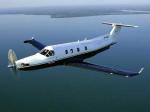By Earl Weener
 Next week, I’m flying my Bonanza to Oshkosh Wisconsin to attend EAA AirVenture, possibly the world’s largest aviation celebration and a big event for people in the general aviation (GA) community. Before heading out, being a flight instructor, I will be doing everything I taught my students — checking out the weather conditions, planning my route, checking NOTAMs (for non-pilot readers, those are the FAA’s Notices to Airmen, important reading before every flight), making sure my Bonanza is ready for the trip, among many other detailed preparations.
Next week, I’m flying my Bonanza to Oshkosh Wisconsin to attend EAA AirVenture, possibly the world’s largest aviation celebration and a big event for people in the general aviation (GA) community. Before heading out, being a flight instructor, I will be doing everything I taught my students — checking out the weather conditions, planning my route, checking NOTAMs (for non-pilot readers, those are the FAA’s Notices to Airmen, important reading before every flight), making sure my Bonanza is ready for the trip, among many other detailed preparations.
While at AirVenture, I hope to take advantage of the seminars and workshops. Although I’ve been flying for many years, there is always more to know and ways to improve. There is clearly room for improvement across GA. Last year in the United States, there were 1,435 GA accidents and 450 fatal injuries. Last month alone, there were 25 fatal GA crashes; this month there have already been more than 20 fatal GA crashes.
With my background in instruction, it is especially discouraging to learn that some of the causes or contributing factors to GA crashes are the same errors that have been made numerous times before by other pilots in similar circumstances. We should all be able to learn, and benefit, from the mistakes of others. Here’s an idea: if you are going to AirVenture, come by the Federal Pavilion and attend one of the NTSB workshops on accident investigation case studies. These investigations show us that all too often pilot decision making and proficiency are at the center of GA accidents.
This frequency raises the question: are GA pilots obtaining adequate training? Flying, regardless of aircraft type, requires proficiency in the same fundamental knowledge and skills. But flying, by its very nature, is varied and often unpredictable. My point is that just because a pilot holds a current certificate does not necessarily mean he or she is proficient and adept at dealing with adverse situations.
In the commercial world, pilots are paid to train and to fly in a variety of environments, thereby building invaluable flying experience. Alternatively, in the GA world, the burden is on the pilot to find both the time and financial resources for additional training and flying experience. In addition, the quality of flight instruction available to the GA community varies widely.
My message to GA pilots: Seek to improve your proficiency through training and experience. A good place to start is at EAA AirVenture [[add link: http://www.airventure.org/attractions/activities.html%5D%5D and its many workshops and forums. The bottom line is GA pilots do not need to be professional pilots to fly like pros!
 Earl F. Weener, Ph.D., took the oath of office as a Member of the National Transportation Safety Board on June 30, 2010. Dr. Weener is a licensed pilot and flight instructor who has dedicated his entire career to the field of aviation safety.
Earl F. Weener, Ph.D., took the oath of office as a Member of the National Transportation Safety Board on June 30, 2010. Dr. Weener is a licensed pilot and flight instructor who has dedicated his entire career to the field of aviation safety.






